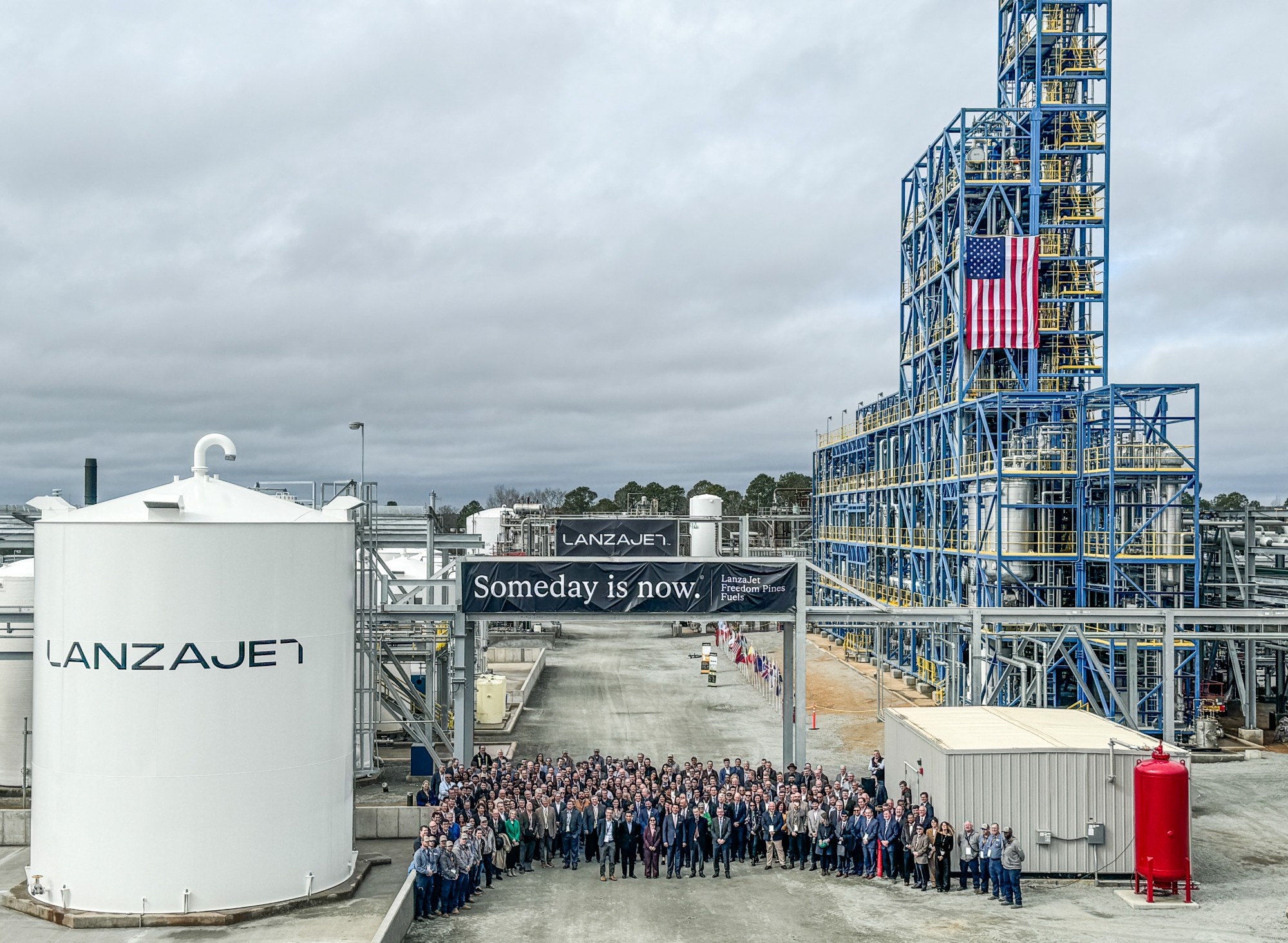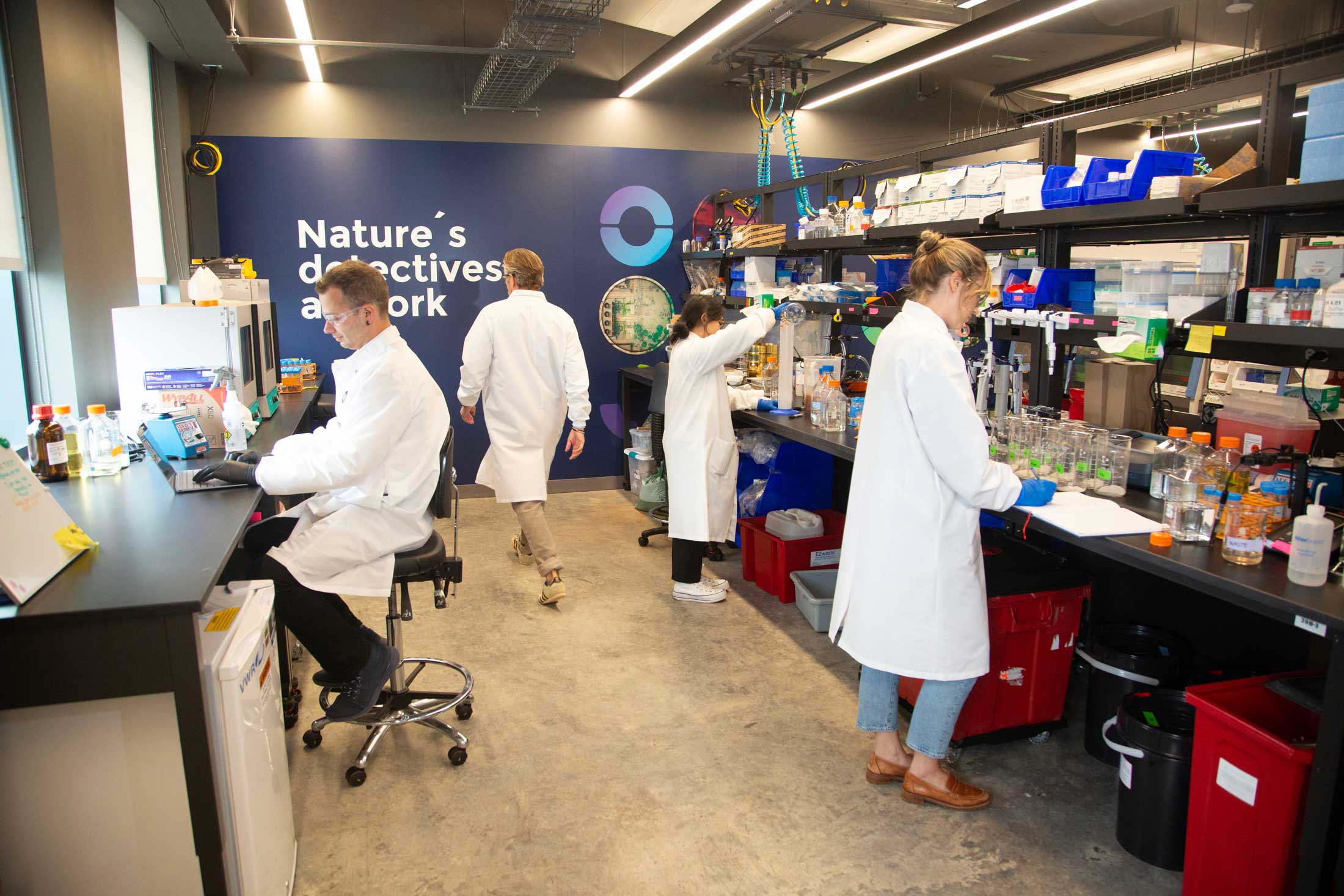LanzaJet Unveils World's First Ethanol to Sustainable Aviation Fuel (SAF) Facility
LanzaJet, a leading sustainable fuels technology company, inaugurated the LanzaJet Freedom Pines Fuels facility in collaboration with government officials, industry leaders, partners, and supporters. This groundbreaking venture marks the world's pioneering ethanol to sustainable aviation fuel (SAF) production facility.
Jan 29, 2024
LanzaTech
LanzaJet, a leading sustainable fuels technology company, inaugurated the LanzaJet Freedom Pines Fuels facility in collaboration with government officials, industry leaders, partners, and supporters. This groundbreaking venture marks the world's pioneering ethanol to sustainable aviation fuel (SAF) production facility.
LanzaJet's innovative technology transforms ethanol into SAF, offering a scalable solution for decarbonizing aviation. The facility, situated in Soperton, Georgia, is set to produce 10 million gallons of SAF and renewable diesel annually, sourced from low carbon, sustainable, and certified ethanol meeting global standards.
The collaboration supports the White House's SAF Grand Challenge, aiming to supply at least 3 billion gallons of SAF annually by 2030 to mitigate aviation emissions. LanzaJet Freedom Pines Fuels, a result of years of industry-first advancements, stands as a blueprint for scaling SAF production and combating climate change.
"Today is testament to the conviction required by industry, government, and funders to advance innovation and stretch the boundaries of what is achievable to address decarbonization and tackle climate change. This is a historic milestone in a long history of firsts for LanzaJet, the United States, and the SAF industry globally," said LanzaJet CEO Jimmy Samartzis. "Our novel LanzaJet ethanol to SAF process technology is now deployed at our commercial plant in Georgia which will convert ethanol into drop-in SAF. As we start-up the plant, we will continue to refine our technology, while launching our efforts to advance new sustainable fuels projects globally. Between feedstock versatility, efficiency, and economics that enable scale in the US and globally, we stand ready to meet aviation's decarbonization goals established at the United Nations and country ambitions, such as the U.S. SAF Grand Challenge."
"The Biden-Harris Administration is committed to harnessing the full potential of SAF as we continue to build a strong economy that is sustainable, resilient, competitive, and keeps rural places thriving," said U.S. Agriculture Secretary Tom Vilsack. "As we transition to SAF, this will not only create new climate smart commodity markets for American producers, but it will also help American companies such as LanzaJet corner the market of a valuable, emerging industry, while revitalizing rural communities like Soperton with agriculture front and center in the effort. LanzaJet's facility will help accelerate the SAF industry and provide new economic opportunities for producers for a more sustainable future."
"LanzaJet Freedom Pines Fuels is proof of the energy transition accelerating in real time," said Jennifer Holmgren, LanzaJet Board Director and Chief Executive of LanzaTech. "We are demonstrating the ability to establish secure supply chains domestically, create new jobs locally, and produce sustainable aviation fuel globally. This historic facility is an important pillar of a growing SAF economy in the United States and is a significant decarbonization milestone in the world."
The SAF produced by LanzaJet will immediately serve as drop-in fuel for existing aircraft, significantly reducing greenhouse gas emissions by over 70 percent. With fully funded operations and committed offtake agreements for the next decade, the facility is poised to generate over 250 jobs and contribute approximately $70 million annually to the local economy.
The inauguration of LanzaJet Freedom Pines Fuels signifies a transformative leap towards sustainable aviation and underscores the industry's collective commitment to environmental stewardship and economic prosperity.
[UPDATE 2/2/2024]
We were able to catch up with LanzaTech’s CEO, Jennifer Holmgren, who is also the board chair for LanzaJet, as well as LanzaJet’s CEO, Jimmy Samartzis, to provide some additional information on this important announcement. See their responses below:
SynBioBeta: The press release mentions significant job creation and economic impact in the local area. Could you detail the types of jobs created and how this facility contributes to the local economy in Soperton and Treutlen County?
Jennifer Holmgren: The LanzaJet Freedom Pines Fuels facility is adjacent to LanzaTech’s Freedom Pines site, which is where LanzaTech works on scale-up and the commercial manufacturing of our microbes. We employ folks across operations, engineering, admin, and science teams.
Jimmy Samartzis: During construction, LanzaJet created over 250 local jobs. During ongoing operation, the site will create 30 direct and 30-50 indirect jobs. The local Treutlen County economy is expected to see an estimated $5M in new wages and benefits, in addition to $70M in annual economic activity.
SBB: What are LanzaJet's plans for expanding this technology globally? How scalable is the ethanol-to-SAF process for widespread adoption in different regions?
JS: LanzaJet has already announced over 300M of annual production capacity across the world in places like the U.S., U.K., E.U., Japan, India, Australia, and New Zealand. Our proprietary Alcohol-to-Jet (ATJ) technology can use any source of low-carbon, sustainable ethanol from a variety of feedstocks, including energy crops, municipal solid waste, carbon off-gases, and more. This makes it exceptionally well-suited to adoption and very scalable in a variety of regions across the world. The ATJ technology is arguably the most-scalable technology now and into the future.
SBB: What future advancements in SAF technology is LanzaJet exploring, and how do you envision the evolution of SAF in the next decade?
JS: We continue to improve our core ATJ technology with every design, achieving improvements in capital expense, carbon intensity, and overall production efficiency. We are scaling the technology to achieve up to 300 million gallons per year of production at a single plant. LanzaJet has experts with experience in oil and gas, engineering, policy, agriculture, supply chain, fuels, etc., which ensures we’re well-positioned to build out these plants worldwide but also scale the technology as we go. ATJ technology kicks off the next generation of SAF that will ensure the industry can scale to meet the significant demands of global aviation. Today, global production of SAF is about 120M gallons, but the annual demand for fossil jet fuel is around 100B gallons per year—so we have a significant opportunity to meet demand, and ATJ is a promising technology that can help close that gap.
SBB: How do you plan to increase awareness and acceptance of SAF among consumers and within the aviation industry?
JS: We work very closely with our partners across the entire aviation value chain and the SAF value chain—from OEMs to airlines to end users and from farmers to ethanol producers. All of these stakeholders are incredibly important to the sustainable growth of this industry, and communicating the importance, urgency, safety, and sustainability of what we’re doing is a top priority.
SBB: The press release mentions a variety of sustainable feedstocks like agricultural waste, municipal solid waste, and energy crops. How does LanzaJet's technology adapt to different feedstocks, and what are the challenges in processing these diverse materials?
JH: The LanzaJet Alcohol-to-Jet (AtJ) process was developed by LanzaTech in partnership with Pacific Northwest National Laboratory (PNNL) and the Department of Energy (DOE) before being spun out into a standalone company. We designed the AtJ process to intake ethanol because it’s a great feedstock that can be made from all sorts of local, geographically advantaged resources. In addition to intaking first-generation ethanol from sugars and starches, it is compatible with ethanol from LanzaTech’s carbon recycling process, which produces ethanol from a variety of waste streams such as industrial, CO2, biomass, and municipal solid waste.
JH: Additionally, the challenges and opportunities for processing different feedstocks are fielded upstream in the initial conversion to ethanol rather than in the AtJ process. LanzaTech’s carbon recycling technology is operating at six commercial-scale facilities around the world using steel mill emissions and refinery off-gases, but we are still at pilot and demonstration scales for processing solid waste streams such as agricultural and municipal solid waste. Our commercial process relies on gas fermentation, so solid feedstocks must undergo an initial gasification step to turn the available carbon into a gas for our microbes to consume and convert into ethanol.


















